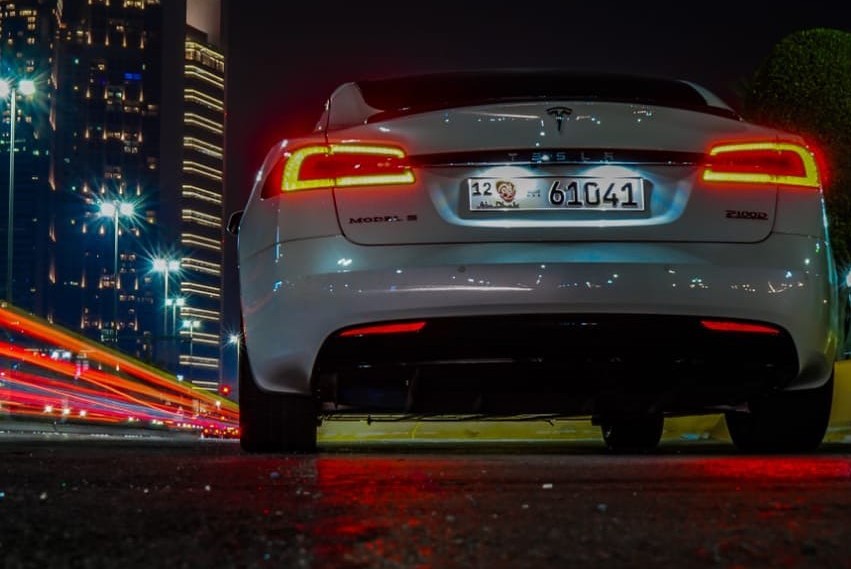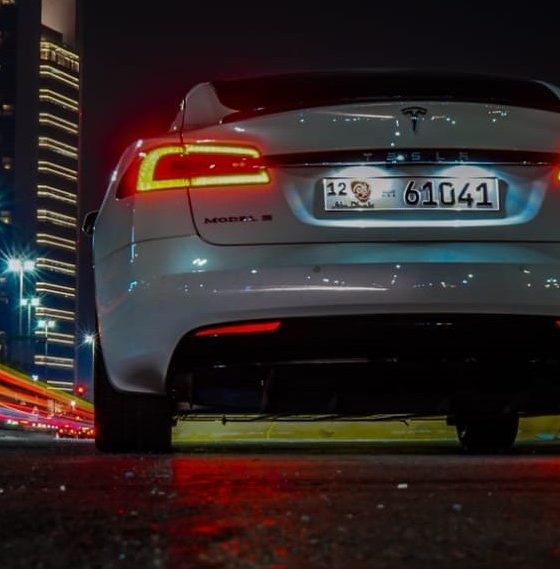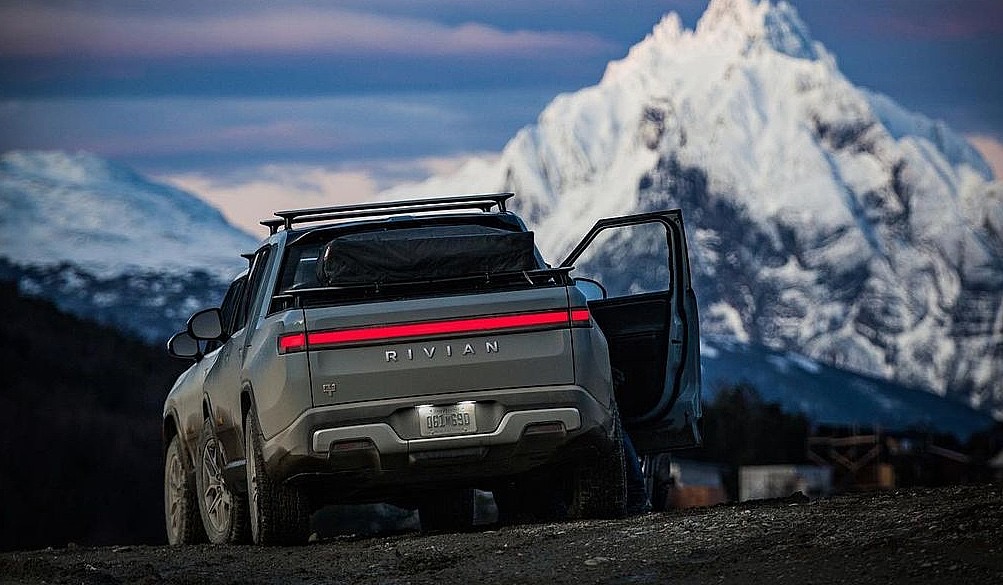

News
The Age of Tesla: Consumer Reports survey reveals that the EV era has begun
Amidst the release of Tesla’s record-breaking numbers for 2020, which saw the electric car maker produce and deliver half a million vehicles during a pandemic, it appears that the American public is just about ready to embrace the EV revolution. This was emphasized in a survey conducted by Consumer Reports, which revealed that the American car buyers are just about ready to embrace the Age of Tesla and EVs.
Consumer Reports’ latest nationally representative survey on electric cars showed that public perception regarding EVs is taking steps towards the mainstream. While only about 30% of the survey’s respondents stated that they are notably familiar with electric cars, almost all the participants had at least heard of EVs. Interest in electric cars was extremely high, with 71% of US drivers stating that they would consider buying an electric car at some point in the future.
Nearly a third of the survey’s respondents indicated that they are interested in purchasing an electric car for their next car. More than 70% of the study’s respondents also agreed on the notion that electric vehicles would be better for the environment, and that automakers should offer more vehicle types such as plug-in electric pickups and SUVs alongside their car EV offerings.

Overall, the results of Consumer Reports’ survey shows that consumers are now becoming steadily more aware of electric cars. And while there are still some concerns about challenges such as the availability of charging stations on the road, Chris Harto, CR’s senior sustainability policy analyst, noted that the use of public charging stations is actually quite rare for a good number of electric car owners.
“American drivers are accustomed to having ready access to gas stations, and may not realize that if they have a personal garage or driveway, they’ll be doing most of their charging at home with an EV. Even though we have found that the typical driver would make as few as six stops at a public charging station every year, a more robust network of fast-charging stations would help alleviate buyers’ concerns about switching to an electric vehicle,” Harto said.
Amidst this shift, the progress and growth of companies like Tesla have been invaluable in pushing the electric vehicle revolution. Tesla’s Supercharger Network, for one, was established and ramped at a time when the company was only producing one vehicle, and at very limited numbers. But years down the road, the Supercharger Network stands as one of the most convenient and reliable rapid charging systems in the country. And considering that Tesla is only getting more aggressive with its Supercharger ramp, the rapid-charging system seems poised to be opened to other EVs as well.

What is rather remarkable is that the EV revolution is now going far beyond Tesla. While Tesla is still poised to lead the market thanks to its head start in battery tech and software, other compelling electric cars from other automakers are also being released. There’s Rivian with its R1T pickup and R1S SUV, both of which are designed to make waves in the luxury adventure market. Lucid Motors’s Air sedan is coming for luxury vehicles like the Mercedes-Benz S-Class. Even legacy automakers like Volkswagen are making some serious bets on electric vehicles, as evidenced by the efforts of VW exec Herbert Diess, a noted ally of Elon Musk.
As electric cars go mainstream and vehicles like the Model 3 and Model Y become more attainable, reasons for sticking with the internal combustion engine decreases significantly. With numerous regions like Europe and China looking to ban ICE cars within the coming years, after all, gas and diesel-powered vehicles are only going to be less compelling. And amidst this decline, electric vehicles like Tesla’s lineup are only bound to get more and more attractive.
EV-Survey-2020-Fact-Sheet-12.16.20-3 by Simon Alvarez on Scribd
Don’t hesitate to contact us for news tips. Just send a message to tips@teslarati.com to give us a heads up.

News
Tesla starts showing how FSD will change lives in Europe
Local officials tested the system on narrow country roads and were impressed by FSD’s smooth, human-like driving, with some calling the service a game-changer for everyday life in areas that are far from urban centers.

Tesla has launched Europe’s first public shuttle service using Full Self-Driving (Supervised) in the rural Eifelkreis Bitburg-Prüm region of Germany, demonstrating how the technology can restore independence and mobility for people who struggle with limited transport options.
Local officials tested the system on narrow country roads and were impressed by FSD’s smooth, human-like driving, with some calling the service a game-changer for everyday life in areas that are far from urban centers.
Officials see real impact on rural residents
Arzfeld Mayor Johannes Kuhl and District Administrator Andreas Kruppert personally tested the Tesla shuttle service. This allowed them to see just how well FSD navigated winding lanes and rural roads confidently. Kruppert said, “Autonomous driving sounds like science fiction to many, but we simply see here that it works totally well in rural regions too.” Kuhl, for his part, also noted that FSD “feels like a very experienced driver.”
The pilot complements the area’s “Citizen Bus” program, which provides on-demand rides for elderly residents who can no longer drive themselves. Tesla Europe shared a video of a demonstration of the service, highlighting how FSD gives people their freedom back, even in places where public transport is not as prevalent.
What the Ministry for Economic Affairs and Transport says
Rhineland-Palatinate’s Minister Daniela Schmitt supported the project, praising the collaboration that made this “first of its kind in Europe” possible. As per the ministry, the rural rollout for the service shows FSD’s potential beyond major cities, and it delivers tangible benefits like grocery runs, doctor visits, and social connections for isolated residents.
“Reliable and flexible mobility is especially vital in rural areas. With the launch of a shuttle service using self-driving vehicles (FSD supervised) by Tesla in the Eifelkreis Bitburg-Prüm, an innovative pilot project is now getting underway that complements local community bus services. It is the first project of its kind in Europe.
“The result is a real gain for rural mobility: greater accessibility, more flexibility and tangible benefits for everyday life. A strong signal for innovation, cooperation and future-oriented mobility beyond urban centers,” the ministry wrote in a LinkedIn post.
News
Tesla China quietly posts Robotaxi-related job listing
Tesla China is currently seeking a Low Voltage Electrical Engineer to work on circuit board design for the company’s autonomous vehicles.

Tesla has posted a new job listing in Shanghai explicitly tied to its Robotaxi program, fueling speculation that the company is preparing to launch its dedicated autonomous ride-hailing service in China.
As noted in the listing, Tesla China is currently seeking a Low Voltage Electrical Engineer to work on circuit board design for the company’s autonomous vehicles.
Robotaxi-specific role
The listing, which was shared on social media platform X by industry watcher @tslaming, suggested that Tesla China is looking to fill the role urgently. The job listing itself specifically mentions that the person hired for the role will be working on the Low Voltage Hardware team, which would design the circuit boards that would serve as the nervous system of the Robotaxi.
Key tasks for the role, as indicated in the job listing, include collaboration with PCB layout, firmware, mechanical, program management, and validation teams, among other responsibilities. The role is based in Shanghai.
China Robotaxi launch
China represents a massive potential market for robotaxis, with its dense urban centers and supportive policies in select cities. Tesla has limited permission to roll out FSD in the country, though despite this, its vehicles have been hailed as among the best in the market when it comes to autonomous features. So far, at least, it appears that China supports Tesla’s FSD and Robotaxi rollout.
This was hinted at in November, when Tesla brought the Cybercab to the 8th China International Import Expo (CIIE) in Shanghai, marking the first time that the autonomous two-seater was brought to the Asia-Pacific region. The vehicle, despite not having a release date in China, received a significant amount of interest among the event’s attendees.
Elon Musk
Elon Musk and Tesla AI Director share insights after empty driver seat Robotaxi rides
The executives’ unoccupied tests hint at the rapid progress of Tesla’s unsupervised Robotaxi efforts.

Tesla CEO Elon Musk and AI Director Ashok Elluswamy celebrated Christmas Eve by sharing personal experiences with Robotaxi vehicles that had no safety monitor or occupant in the driver’s seat. Musk described the system’s “perfect driving” around Austin, while Elluswamy posted video from the back seat, calling it “an amazing experience.”
The executives’ unoccupied tests hint at the rapid progress of Tesla’s unsupervised Robotaxi efforts.
Elon and Ashok’s firsthand Robotaxi insights
Prior to Musk and the Tesla AI Director’s posts, sightings of unmanned Teslas navigating public roads were widely shared on social media. One such vehicle was spotted in Austin, Texas, which Elon Musk acknowleged by stating that “Testing is underway with no occupants in the car.”
Based on his Christmas Eve post, Musk seemed to have tested an unmanned Tesla himself. “A Tesla with no safety monitor in the car and me sitting in the passenger seat took me all around Austin on Sunday with perfect driving,” Musk wrote in his post.
Elluswamy responded with a 2-minute video showing himself in the rear of an unmanned Tesla. The video featured the vehicle’s empty front seats, as well as its smooth handling through real-world traffic. He captioned his video with the words, “It’s an amazing experience!”
Towards Unsupervised operations
During an xAI Hackathon earlier this month, Elon Musk mentioned that Tesla owed be removing Safety Monitors from its Robotaxis in Austin in just three weeks. “Unsupervised is pretty much solved at this point. So there will be Tesla Robotaxis operating in Austin with no one in them. Not even anyone in the passenger seat in about three weeks,” he said. Musk echoed similar estimates at the 2025 Annual Shareholder Meeting and the Q3 2025 earnings call.
Considering the insights that were posted Musk and Elluswamy, it does appear that Tesla is working hard towards operating its Robotaxis with no safety monitors. This is quite impressive considering that the service was launched just earlier this year.








